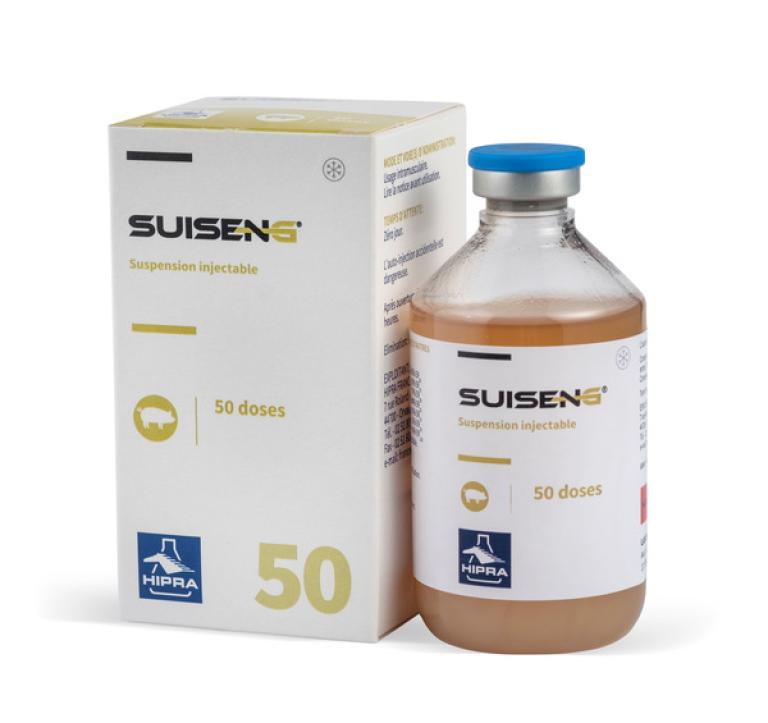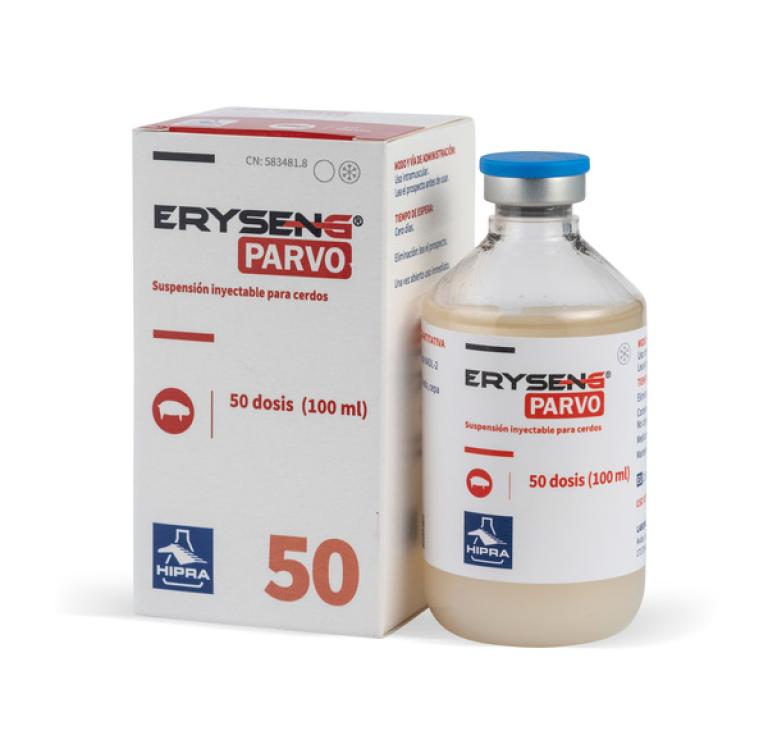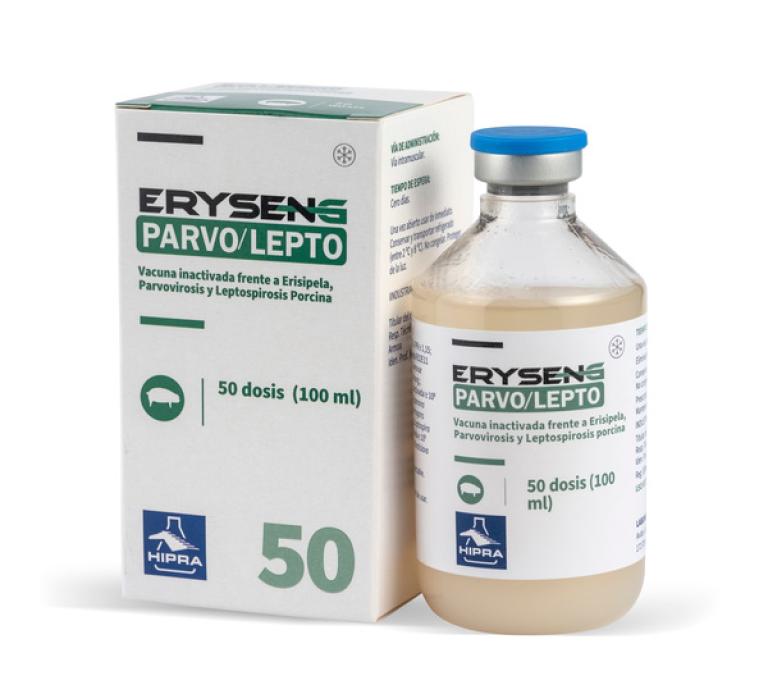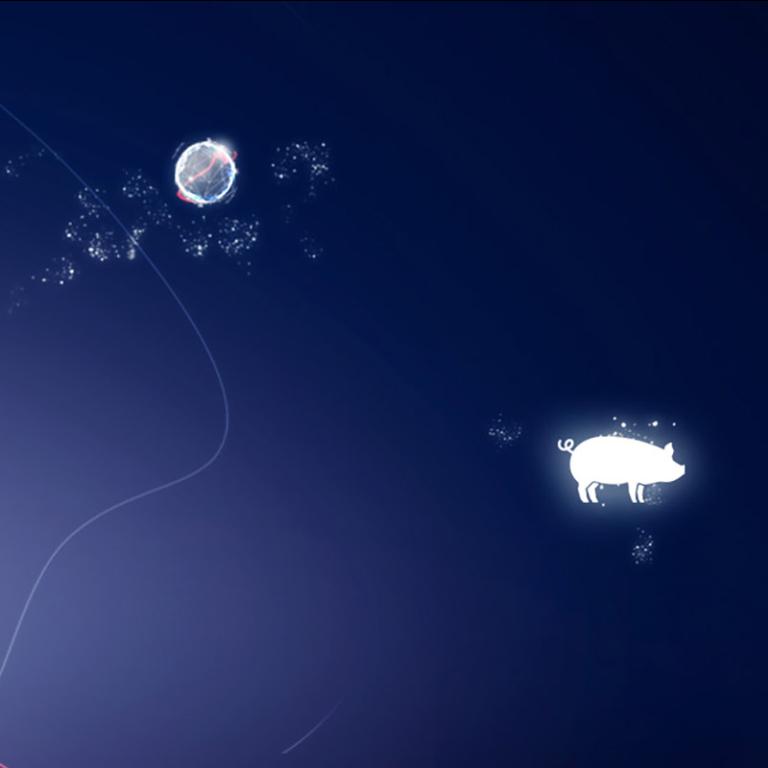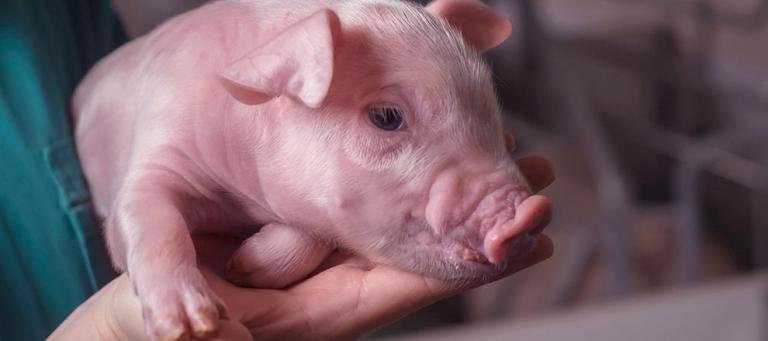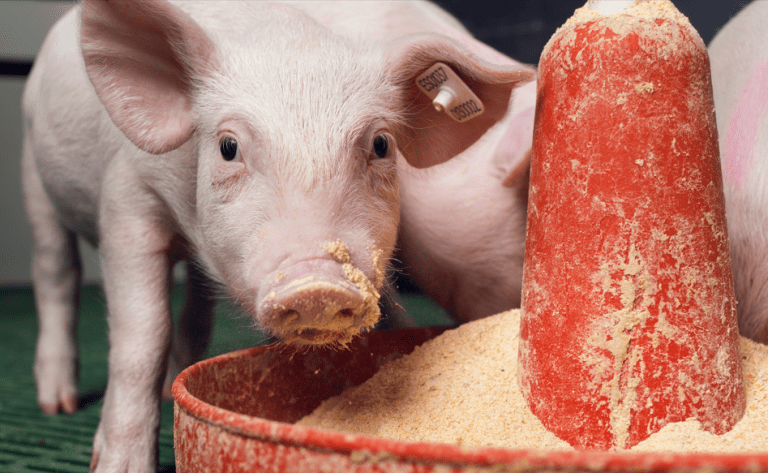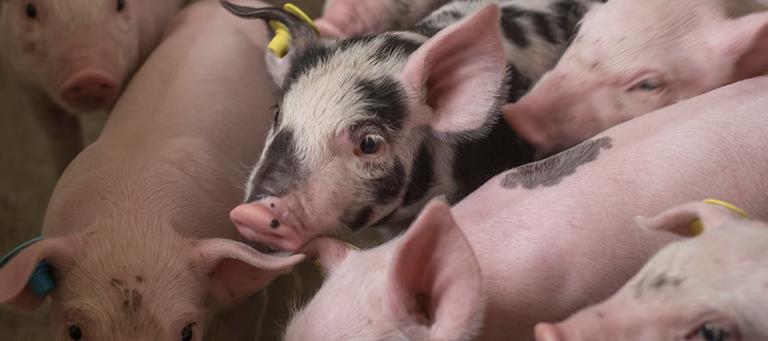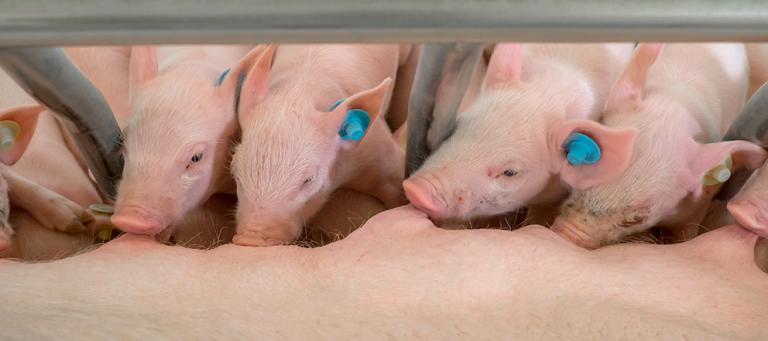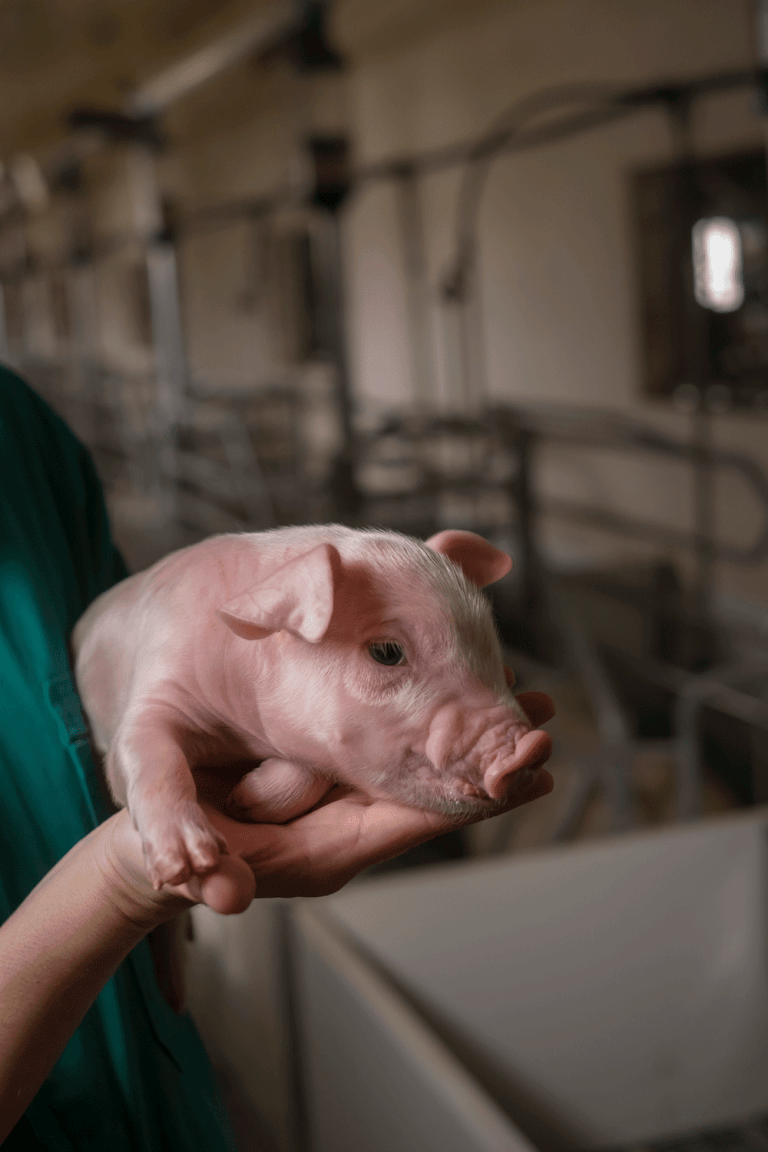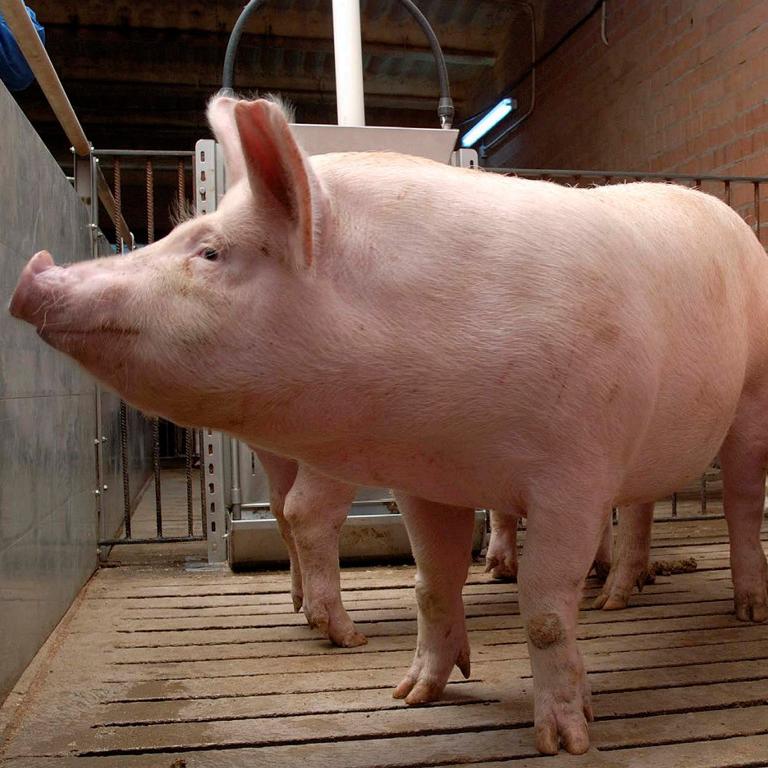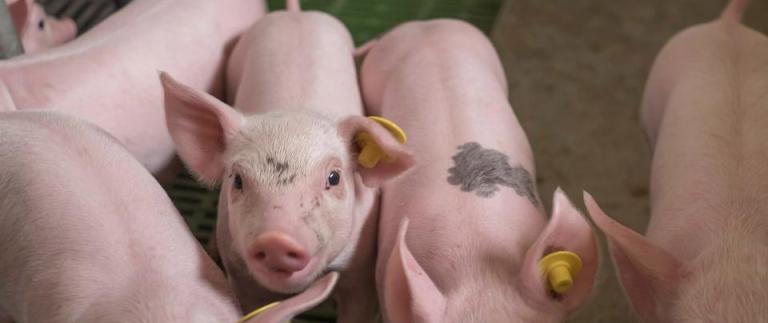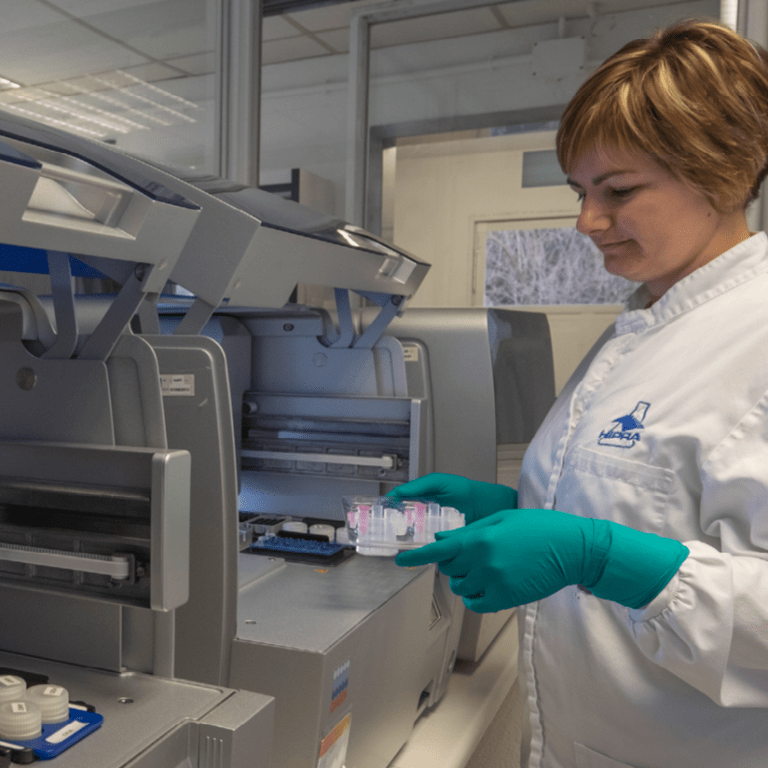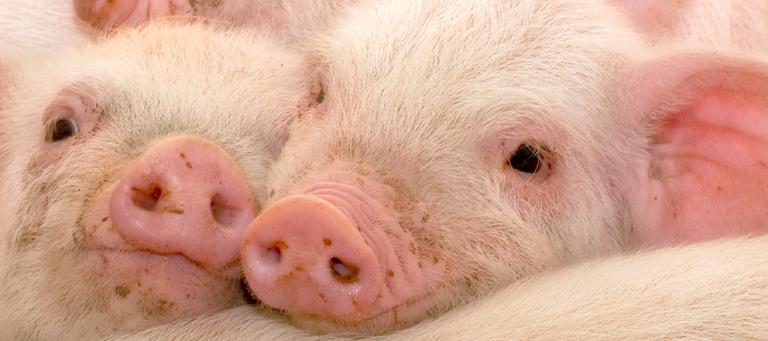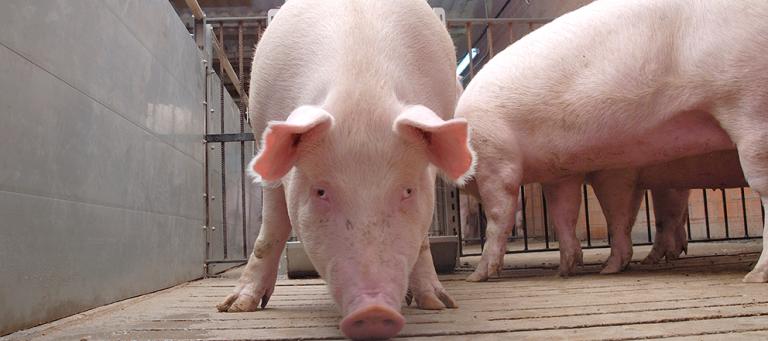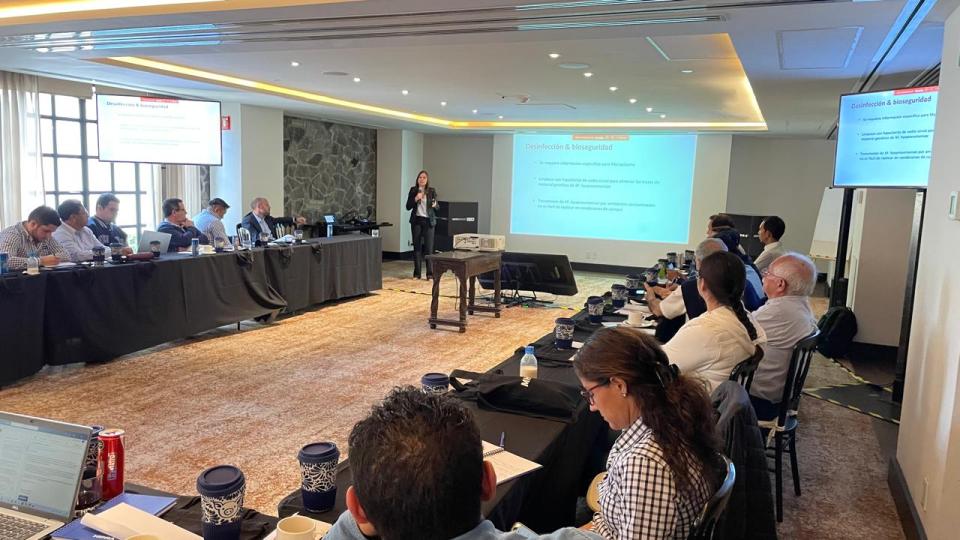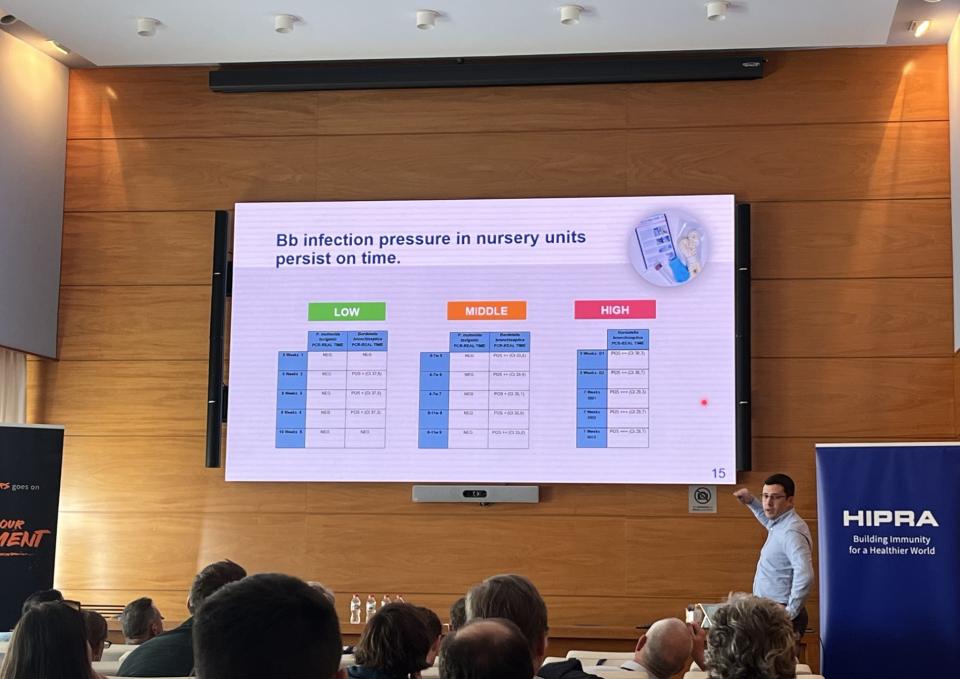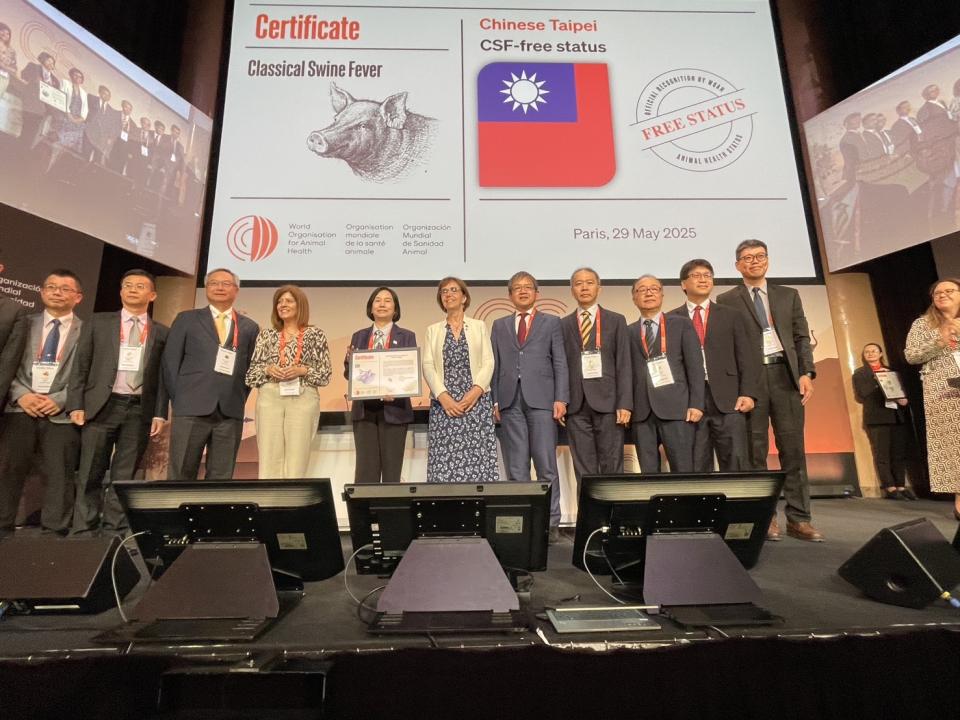2a. Clostridium novyi Review (part 1)
Understanding what is Clostridium novyi
Clostridium novyi: Subtypes and toxins
Clostridia are Gram-positive, sporulating, oxygen-tolerant-to-strictly anaerobic rods, many of which cause disease in pigs, other domestic animals, and humans (Figure 1 and 2).
They can come from exogenous (most commonly the soil or animal feces) or endogenous sources (often the intestinal tract of the affected individual) (Songer, 1996).


Figure 1. Smears from the liver of a sow that died of Clostridium novyi infection, showing large gram-positive rods with oval to cylindrical subterminal spores (magnification ×1000). Source: Dr. Alfredo García Sánchez, Centro de Investigaciones Científicas y Tecnológicas de Extremadura (CICYTEX).


Figure 2. Microscopic lesions with Clostridium novyi infection. Gram and fluorescent antibody stains of direct smears and bacteriologic culture. Source: Dr. Roy Schultz, Iowa State University’s College of Veterinary Medicine.
Pathogenesis of most clostridial infections is based upon production of toxins, and can be categorized as neurotoxic, histotoxic, and enteric as seen in Table 1 (Hatheway, 1990).

Clostridium novyi was first isolated in the late 19th century (Novy, 1894). As noted (Table 2), it occurs as multiple types, differentiated by selective toxin production.
Differential production of alpha and beta toxins determines the toxin phenotype. Clostridium novyi type C is nontoxigenic (and therefore avirulent), but types A, B, and D (C. haemolyticum), cause disease in humans and domestic animals.
Thus, Clostridium novyi type A produces the organism’s alpha toxin. Type B, the primary cause of disease in sheep and swine, produces alpha toxin, but also makes a moderate amount of C. novyi beta toxin (Schranner et al, 1992). Finally, type D produces no alpha toxin, but secretes much more beta toxin than type B strains (Table 2).
It seems that C. novyi types B, C, and D are one independent species arising from the same phylogenetic background (Sasaki et al, 2002; Sasaki et al, 2001; Chen et al, 2011).

Table 2. C. novyi selective toxin production.
C. novyi in humans
Before discussing the specific impact of C. novyi on domestic animals and in particular on swine, it is probably worth emphasizing the role of C. novyi in human gas gangrene (Majumdar et al, 2004).
Dormant spores in muscles are potential sources of wound infections. Tyxpically, spores are introduced into a wound where they germinate and produce alpha toxin. Thus, the disease caused by C. novyi seems to be more common following wartime injuries than in those injuries experienced in peacetime.
There is no evidence that human infections are, strictly speaking, zoonotic, although the source of C. novyi may be, ultimately, the feces of domestic animals, which contaminate the environment.
C. novyi in other species
Disease in sheep and cattle
Formal infectious necrotic hepatitis in sheep is best known as an acute toxemia, in which disease begins in areas of liver necrosis caused by migration of liver flukes (Mitchell, 2002). Spore germination and organismal growth in these necrotic lesions leads to production and dissemination of alpha and beta toxins, and systemic toxin effects lead to the death of the animal.
Clostridium novyi infection in sheep and cattle is sometimes called “black disease”, due to accumulation of blood in the vasculature on the underside of the skin; it becomes black as clots develop and the blood lyses (Hamid et al, 1991; Duncan 1984).
Clostridium novyi type D causes bacillary hemoglobinuria of cattle and other ruminants. Type D spores found frequently in the intestinal tract cross the intestinal wall, enter portal circulation, and deposit in the liver. Immature flukes migrate through liver, causing necrosis and hypoxia and inducing germination of spores in Kupffer cells.
Beta toxin causes hepatic necrosis, and dissemination through the bloodstream causes intravascular hemolysis and hemorrhage. Clinical signs include fever, pale mucus membranes, anorexia, and abdominal pain. The case fatality rate is 90-95%.
Disease in pigs
There is no good information on the colonization rate in pigs of any age (sows, boars, piglets, fattening pigs). Disease, however, seems always of highest incidence by far among sows, suggesting a specific pathophysiologic event that predisposes sows to C. novyi hepatitis, toxemia, and bacteremia.
The disease has not been satisfactorily reproduced by inoculation of pigs with spores of C. novyi, but there is sufficient information from diagnostic work to conclude that C. novyi causes porcine infectious necrotic hepatitis. Deaths due to this condition are almost all focused in the peripartum period near the end of the sow cycle.
In cases of unexpected mortality in gestating sows, veterinarians need to be aware of the most common causes of death, including C. novyi infection. In order to achieve a correct diagnosis, it is essential to perform a postmortem examination and collect samples as soon as possible after death.
The need to be aware of porcine infectious necrotic hepatitis
There is nothing so disconcerting to a farmer or veterinarian on a pig farm as the sudden death of breeding sows.
On the one hand, they are animals in which a large amount has been invested and on the other, a high mortality rate increases the renewal rate and therefore the percentage of primparae, with a consequent decrease in the general productivity of the farm (García, 2013).
Pathogenesis of C. novyi infections and toxin action
The local lesion, whether in humans or domestic animals, is a zone of necrosis. Alpha-toxigenic C. novyi strains cause disease that presents with an archipelago of signs and symptoms, including refractory hypotension, leukocytosis, and various effusions (Ryan et al, 2001).
All of the large clostridial cytotoxins consist of single peptide chains averaging about 250,000 MW. Its action upon injection is characterized by fluid loss into the interstitial space.
Specifically, clostridial toxins glucosylate GTPases that are involved in actin cytoskeletal function impairing proper cell:cell contact (Selzer et al, 1996; Popoff and Bouvet, 2009), and leading to loss of integrity of vascular endothelium (Pires et al, 2012).
Epidemiology and transmission
It may be safe to say that, in the vast majority of cases, it is a peripartum disease. Rather, it is more probable that some physiologic event in proximity to parturition in the body of the sow is the inciting factor for disease.
Piglets could, conceivably, be colonized in the farrowing crate or stall during the first few hours after farrowing. In fact, it seems likely that exposure to a shedding sow early in life or to growing pigs at any stage is the most likely route to colonization.
The average parity of sows experiencing infectious necrotic hepatitis is about 5-6 litters. Sows in good body condition are at greatest risk, and disease occurs most often in the summer. Most cases occur in lactating sows and losses can easily exceed 15–30% per year.
Colonization without excretion (or simple shedding) seems a completely unreasonable expectation, so a colonized animal should be capable of spreading the organism to other pigs.
Clinical signs
The course of the disease is generally peracute, with hardly any clinical signs, which makes identification of sick animals difficult. The animals generally appear to be in good physical condition and then die suddenly, with unusual and rapid postmortem decomposition being characteristic (García, 2013).
Pathological changes include gross distention of the carcass, purple discoloration of the skin, generalized edema and subcutaneous infiltration with bubbles and foul smelling bloody fluid in pericardial, pleural, and abdominal cavities (Figure 3, A and B).
All organs are typically softened, spongy, gas-filled, and severely necrotized.


Figure 3. Image of a dead sow. Source: HIPRA.
Livers are enlarged and dark, and the parenchyma is uniformly infiltrated with gas bubbles, giving a spongy, “aerochocolate” appearance (Figure 4, A and B). Cases are sometimes accompanied by gastric ulcers.


Figure 4. The liver uniformly infiltrated with gas bubbles, presenting a spongy appearance on the cut surface, probably the most distinguishing feature of sudden death in sows caused by Clostridium novyi. Source: Dr. Alfredo García Sánchez, Centro de Investigaciones Científicas y Tecnológicas de Extremadura (CICYTEX).
Field case
Evidence of an outdoor pig-breeding unit of the Tierpark Arche Warder e. V. (Germany), where 16 pigs of different ages and sexes died in October 2011.
Necropsy revealed tympany, liver emphysema, subcutaneous edema, hemopericardium, hemothorax, and intense gas bubble infiltrations in muscles. The stomachs were filled. Initial anaerobic bacteriological investigations gave negative results, but PCR analysis of tissues revealed the flagellin gene of C. novyi types A and B.
Thus, C. novyi infection was diagnosed as the cause of the pig mortality (Jandowsky et al, 2013).




